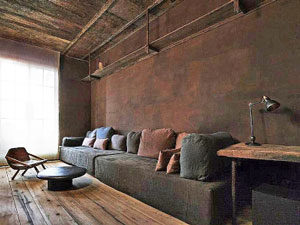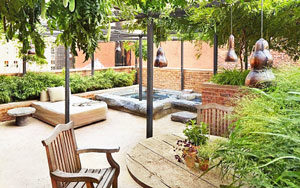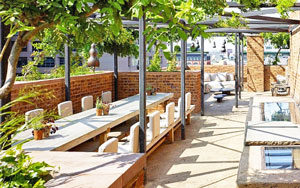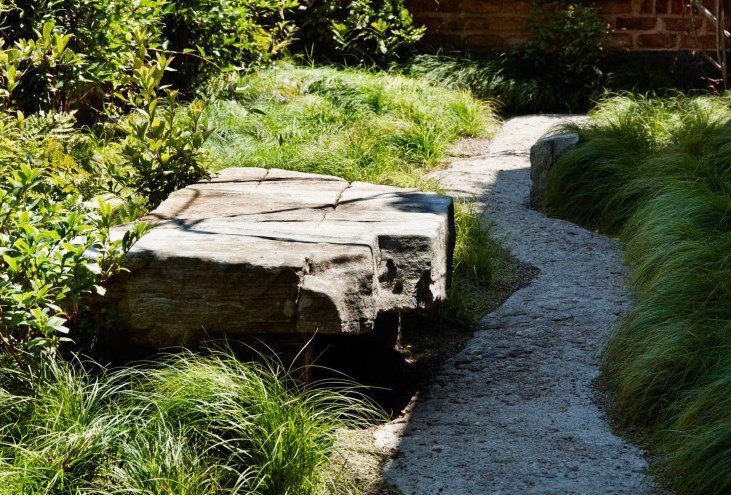The word Mottainai is another of these Japanese words that is good to know. It gets into the dictionary of more and more people around the world thanks to the global environmental debate and the struggle to stop the negative climate change.
 The meaning of the word Mottainai
The meaning of the word Mottainai
“Mottainai” is about regret for something that has not been fully utilized.
You can use the word Mottainai when you want to say “Oh, what a waste!”.  When someone throws away food. When someone has a closet full of clothes they can’t even wear and buys more and more. When someone leaves water running for an unnecessarily long time. But also when someone doesn’t use their potential and wastes their time on unimportant things. All this is “Mottainai”. Anything that could be useful but for some reason you have not used it right, all that is Mottainai.
When someone throws away food. When someone has a closet full of clothes they can’t even wear and buys more and more. When someone leaves water running for an unnecessarily long time. But also when someone doesn’t use their potential and wastes their time on unimportant things. All this is “Mottainai”. Anything that could be useful but for some reason you have not used it right, all that is Mottainai.
It is the idea that everything has a purpose and it is important to try to make full use of things. This includes really everything – from meal on your plate up to your effort to do something.
Like almost all of these useful phrases, “Mottainai” refers to a historical Japanese culture and way of thinking that many Japanese retain to this day.
Mottainai is rooted in Japanese Buddhist philosophy, according to which we all should respect and feel great gratitude towards our world, our planet and all the resources it provides us.
According to some, Mottainai also has a connection with the Shinto beliefs – where even objects have their souls, and should therefore be treated with respect. And the best way to show respect is not to waste them and use them properly.
Still, it cannot be said that the essence of the Mottainai idea is only Japanese. We all remember when we were kids and our parents would urge us at home to eat all the food on our plates and not waste it. Just like when they told us in our teenage years not to waste our time and abilities.
Mottainai and environmental protection
In the context of the environment, Mottainai refers to the three groups of R + 1: Reduce, Reuse, Recycle + Respect ( in relation to Mother Nature as well as in relation to the natural resources it provides for us).

In the context of global environmental protection, the word Mottainai was probably first used by Kenyan Nobel Laureate Wangari Maathai.
“Even at a personal level, we can all reduce, re-use and recycle, what is embraced as Mottainai in Japan, a concept that also calls us to express gratitude, to respect, and to avoid wastage.” (Wangari Maathai)
At the 2009 UN Climate Change Summit, she mentioned, among other things, that if we wanted to prevent wars arising from disputes over natural resources, we should all make efficient use of limited resources and share them fairly.
History
Mottainai approached the Japanese for economic reasons
How the spirit of Mottainai came to be through Japanese history? That’s not a very nice story.
 Before Japan was first united under the Tokugawa (1603-1868), there was war everywhere. In the four-tiered social hierarchy of Japan, the Samurai naturally stood at the top, followed by farmers, then artisans, and then traders in the lower place.
Before Japan was first united under the Tokugawa (1603-1868), there was war everywhere. In the four-tiered social hierarchy of Japan, the Samurai naturally stood at the top, followed by farmers, then artisans, and then traders in the lower place.
However, during the Tokugawa regime, Japan enjoyed more than 200 years of peace. As a result, merchants gained increasing economic power and social influence. The Samurai, who remained ignorant of investment, soon became virtually out of power and traders became influencers in the Japanese economy. Traders helped promote the consumption and living standards of people in cities.
Meanwhile, the Samurai were the owners of Japan and the rulers of farmland and farmers. They collected harvested rice from farmers as a tax and thus made a living (selling rice to make money). The trend of raising living standards was bad news for the Samurai, because if their farmers themselves exchanged their rice for money to buy things, that meant less rice to be paid as part of it for taxes.
The Samurai, who had not learned how to prosper financially in the new peace age, could only come up with the idea of spending less. They restricted or banned any form of luxury among farmers and encouraged a humble and modest lifestyle. To set an example for this lifestyle for others, the Samurai refrained from consuming too much food and hoarding things.
Thanks to propaganda, the humble way of life of the Samurai was recognized as a Japanese virtue and led to an even stronger establishment of the Mottainai spirit among the Japanese.
Mottainai and the present
Although the story of the origin of the Mottainai idea dates back to ancient and distant antiquity, this concept is now being re-awakened. Just for another purpose now. The Mottainai concept teaches us to value all resources. It teaches us to deal responsibly and creatively with what already exists, without the need for new and new production with high consumption of new resources.
We can all contribute a little to mitigating climate change by reducing consumption, refurbishing or renovating old equipment, recycling things that have ceased to serve us for their original purpose and, most importantly, respect for nature.




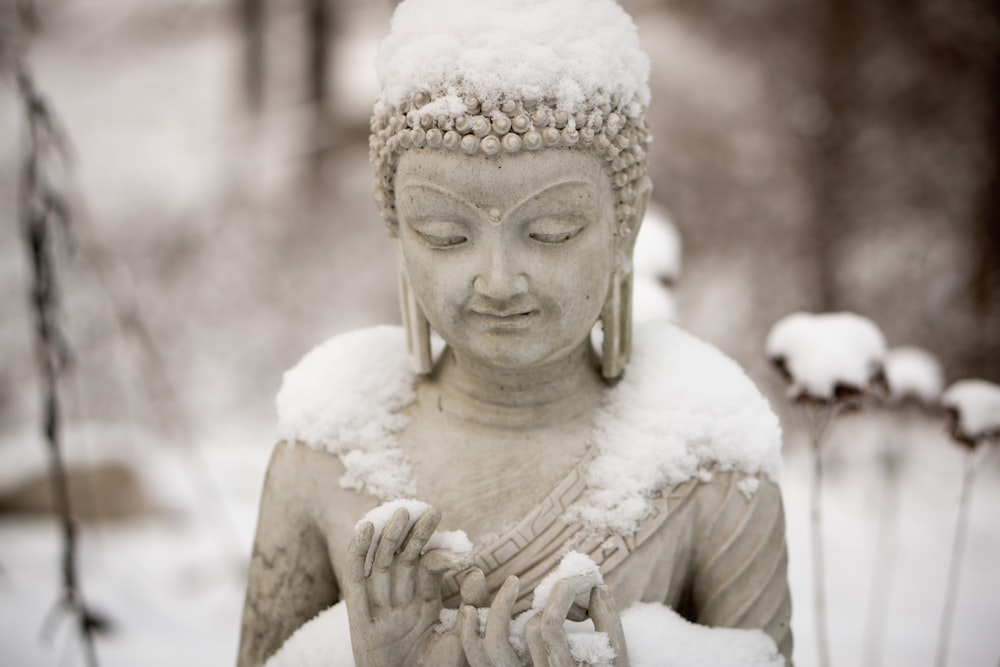
 The word “mushin” consists of two kanji characters: 無 (mu), which means “emptiness,” and 心 (shin), which means “heart,” “spirit,” or in this case, “mind.” Mushin can be roughly translated to “nothing on the mind” or “no mind.” It comes from a longer phrase used in Zen Buddhism, “無心 の 心” (mushin no shin), or “mind without thinking.”
The word “mushin” consists of two kanji characters: 無 (mu), which means “emptiness,” and 心 (shin), which means “heart,” “spirit,” or in this case, “mind.” Mushin can be roughly translated to “nothing on the mind” or “no mind.” It comes from a longer phrase used in Zen Buddhism, “無心 の 心” (mushin no shin), or “mind without thinking.”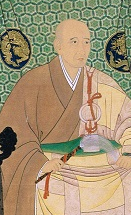
 Such a pure state of mind, pure mental clarity, means that the mind is not firm, busy with thoughts or emotions, and therefore open to everything. Present, conscious and free.
Such a pure state of mind, pure mental clarity, means that the mind is not firm, busy with thoughts or emotions, and therefore open to everything. Present, conscious and free.
 Almost every one of us, regardless of age, would “sometimes” need or simply want to learn something new or “just” to improve in something. And not only in the professional life level, but also in the private one. Whether it is to learn a foreign language properly, improve your physical condition, or even fulfill your secret desire to learn to dance or paint pictures.
Almost every one of us, regardless of age, would “sometimes” need or simply want to learn something new or “just” to improve in something. And not only in the professional life level, but also in the private one. Whether it is to learn a foreign language properly, improve your physical condition, or even fulfill your secret desire to learn to dance or paint pictures.


 The word “kaizen” is a combination of two Japanese words “kai” and “zen”. “Kai” is literally a change, so in a rough Japanese translation, kaizen means “change for the better”, which simply expresses its essence – continuous gradual improvement.
The word “kaizen” is a combination of two Japanese words “kai” and “zen”. “Kai” is literally a change, so in a rough Japanese translation, kaizen means “change for the better”, which simply expresses its essence – continuous gradual improvement.
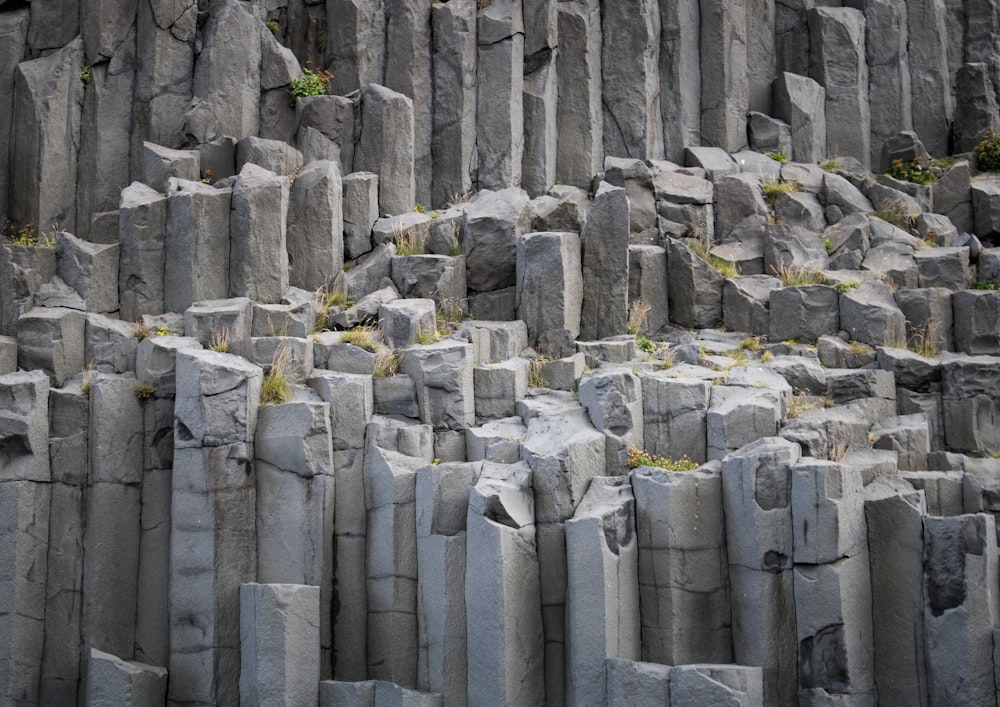
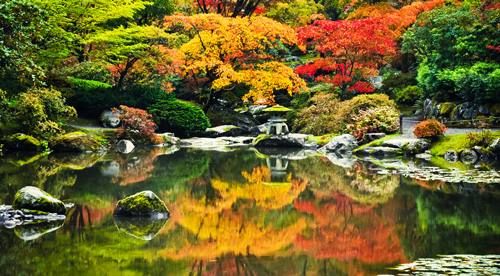
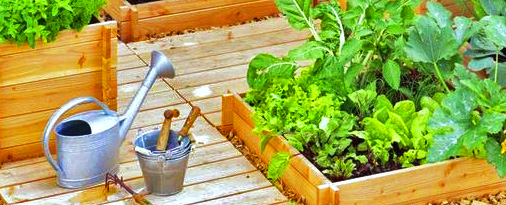
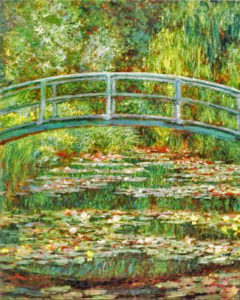
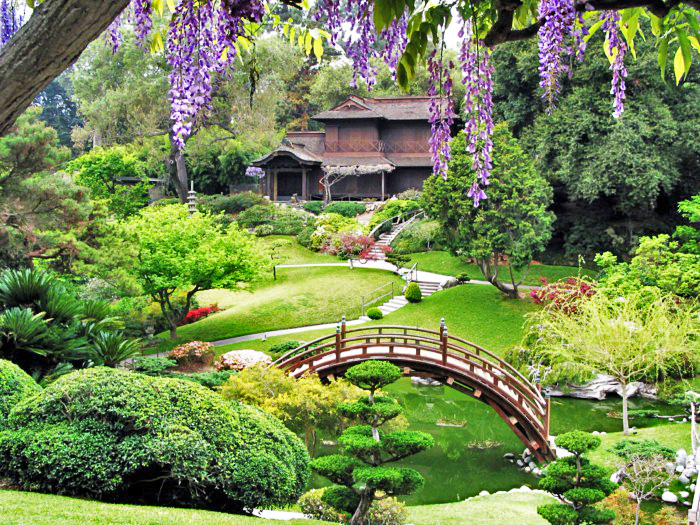 If you would like to create a truly authentic
If you would like to create a truly authentic 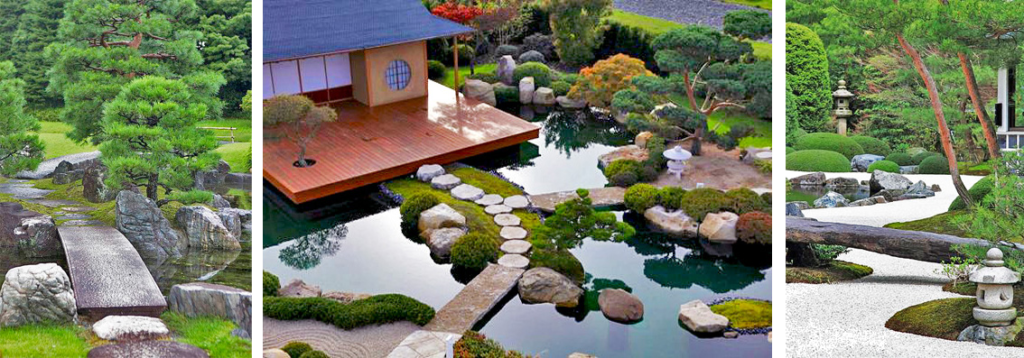 However, to create your own tranquil oasis of peace and harmony, you do not have to try for a completely authentic Japanese garden, strictly observing all the “rules” and aspects. You can only be inspired by some of these
However, to create your own tranquil oasis of peace and harmony, you do not have to try for a completely authentic Japanese garden, strictly observing all the “rules” and aspects. You can only be inspired by some of these 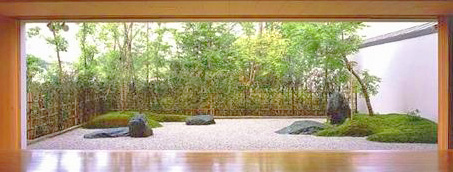 The appearance of a typical Zen garden defies the classic definition of “garden” in almost every aspect. It is not a place with lanes of lush trees, where a bright flood of flowers of all possible colours shines next to a green lawn. It’s not a place you would have a garden picnic or party at with your family or friends.
The appearance of a typical Zen garden defies the classic definition of “garden” in almost every aspect. It is not a place with lanes of lush trees, where a bright flood of flowers of all possible colours shines next to a green lawn. It’s not a place you would have a garden picnic or party at with your family or friends.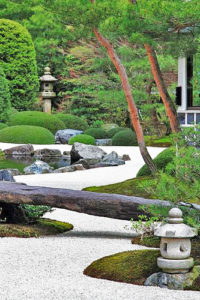 Right from the beginning, it should be stressed that the term “Zen Garden” is somewhat incorrect. It is only the “western” naming of this kind of gardens. Japanese for this type of gardens use the term “kare sansui”, which in literal translation means “dry mountains and waters” or “dry landscapes”.
Right from the beginning, it should be stressed that the term “Zen Garden” is somewhat incorrect. It is only the “western” naming of this kind of gardens. Japanese for this type of gardens use the term “kare sansui”, which in literal translation means “dry mountains and waters” or “dry landscapes”.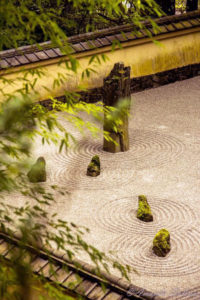 What is a Zen garden?
What is a Zen garden?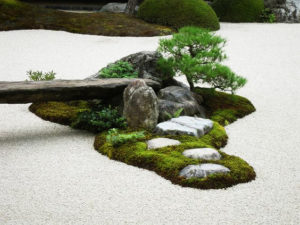 In Zen gardens, the typical purity and balance of space are most obvious aspects (
In Zen gardens, the typical purity and balance of space are most obvious aspects (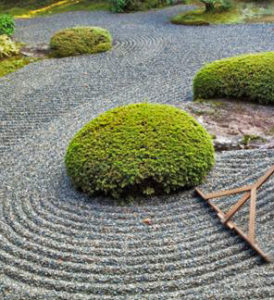 Zen gardens are intended as a personal project that reflects the own inner self. White sand or gravel is raked in an original pattern by the owner of the garden. Copying the pattern of another Zen Garden is against the spirit of such a garden; although this does not mean that you cannot inspire yourself.
Zen gardens are intended as a personal project that reflects the own inner self. White sand or gravel is raked in an original pattern by the owner of the garden. Copying the pattern of another Zen Garden is against the spirit of such a garden; although this does not mean that you cannot inspire yourself.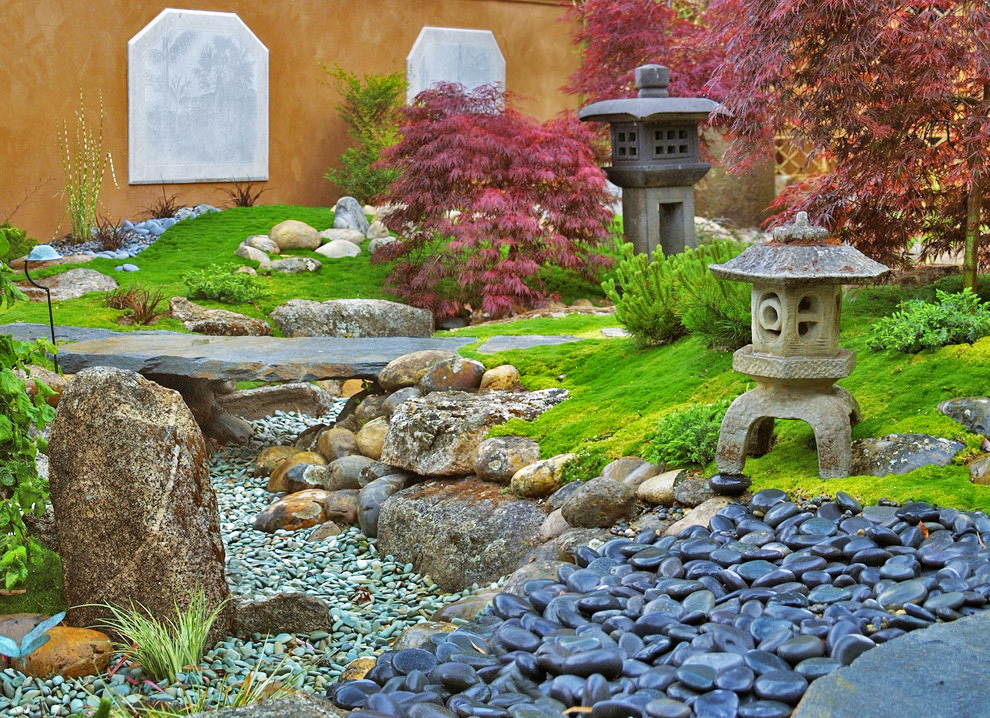 Do you like the idea of a small sanctuary of peace and tranquillity – a small zen space a few steps from your door, right in your garden? Although the art of Japanese gardening is many centuries old, in just one weekend you can create a reasonable replica of the classic temple garden in a corner of your garden. It requires a minimal amount of materials and money, and especially very little maintenance.
Do you like the idea of a small sanctuary of peace and tranquillity – a small zen space a few steps from your door, right in your garden? Although the art of Japanese gardening is many centuries old, in just one weekend you can create a reasonable replica of the classic temple garden in a corner of your garden. It requires a minimal amount of materials and money, and especially very little maintenance.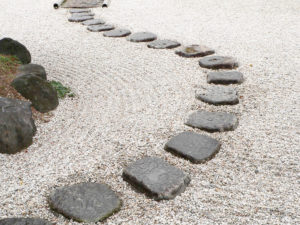 The basic ingredients you will need are a small, even a miniature land, some amount of sand (the whiter it is, the better) or tiny gravel to cover the ground (we recommend to lay a garden textile foil under it), some stones of different shapes and sizes. Do not worry too much about the right choice of stones at the beginning. Since they are not fixed, you can later simply replace, move and add some, and gradually tune them to your imagination.
The basic ingredients you will need are a small, even a miniature land, some amount of sand (the whiter it is, the better) or tiny gravel to cover the ground (we recommend to lay a garden textile foil under it), some stones of different shapes and sizes. Do not worry too much about the right choice of stones at the beginning. Since they are not fixed, you can later simply replace, move and add some, and gradually tune them to your imagination.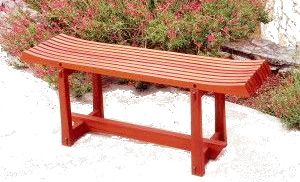
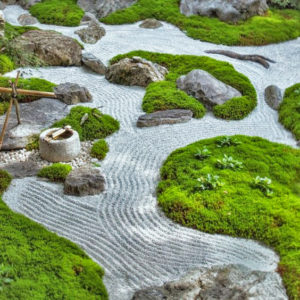 An ideal
An ideal 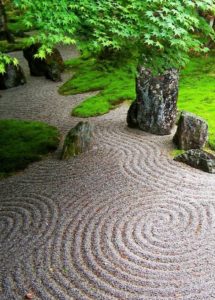


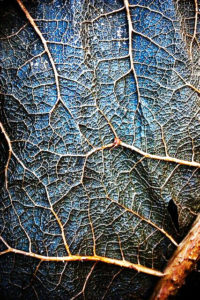 And if we can see in these “imperfections” just the certain beauty and uniqueness, sure our life can be also happier than the life of those, who keep trying to merge with the above-mentioned concept of perfection and eternity or those who are unsuccessfully expecting it all from their surroundings.
And if we can see in these “imperfections” just the certain beauty and uniqueness, sure our life can be also happier than the life of those, who keep trying to merge with the above-mentioned concept of perfection and eternity or those who are unsuccessfully expecting it all from their surroundings.
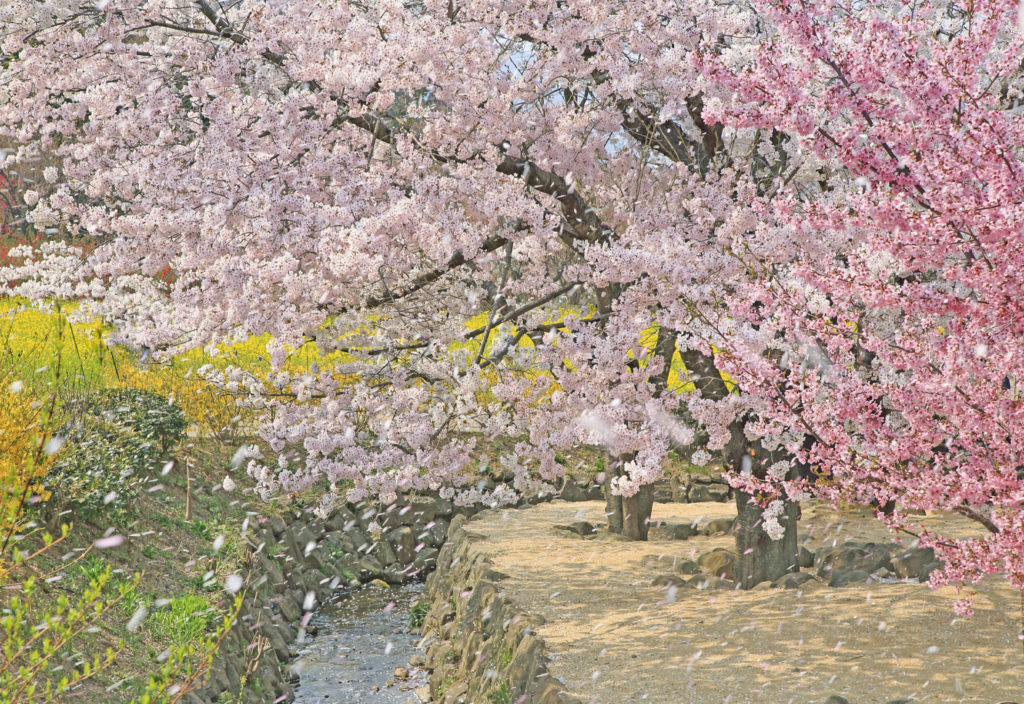 Every year at the end of March or the beginning of April, when most of us are preparing for or already celebrating Easter holidays, the Japanese celebrate a great holiday of cherry blossoms -Hanami.
Every year at the end of March or the beginning of April, when most of us are preparing for or already celebrating Easter holidays, the Japanese celebrate a great holiday of cherry blossoms -Hanami.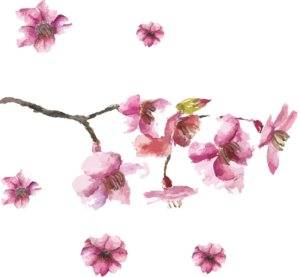 Hanami, roughly translated as flower viewing, is a very old Japanese custom how to celebrate the end of the winter and the beginning of spring and how to enjoy the tranquil beauty of spring tree flowers.
Hanami, roughly translated as flower viewing, is a very old Japanese custom how to celebrate the end of the winter and the beginning of spring and how to enjoy the tranquil beauty of spring tree flowers.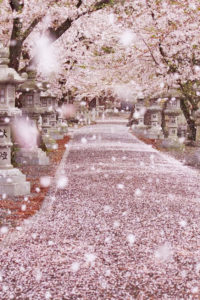 After the first few blossoms, all sakuras are quickly covered in the gentle beauty of mostly pale pink or white dresses of millions of flowers Some species of sakura have flowers in dark pink, yellow and some are almost green. But the flowers will only last on the trees for a week or two until they start falling down. Sakura flowers are considered to be the symbol of the transience of life. So, it can be said, that the hanami is also kind of
After the first few blossoms, all sakuras are quickly covered in the gentle beauty of mostly pale pink or white dresses of millions of flowers Some species of sakura have flowers in dark pink, yellow and some are almost green. But the flowers will only last on the trees for a week or two until they start falling down. Sakura flowers are considered to be the symbol of the transience of life. So, it can be said, that the hanami is also kind of 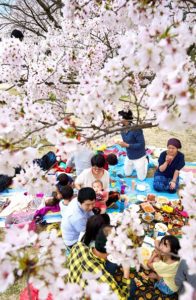
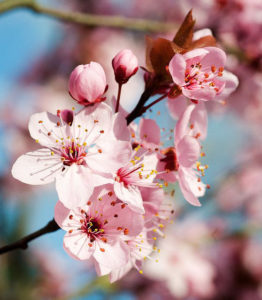 and centuries before the hanami became a massive affair. Naturally, nationwide popularity is also used by companies for commercial purposes.
and centuries before the hanami became a massive affair. Naturally, nationwide popularity is also used by companies for commercial purposes.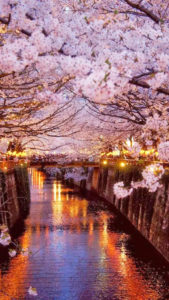
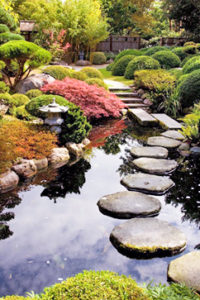 Balance
Balance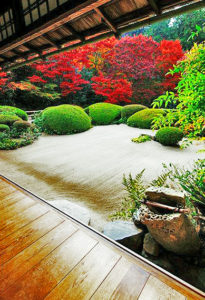 Space
Space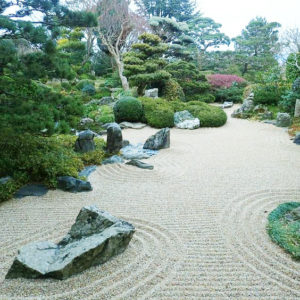 Line of the garden
Line of the garden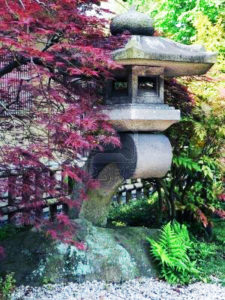
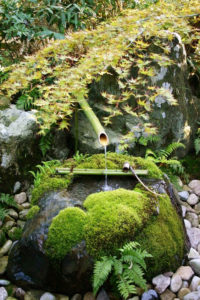 Sabi, on the other hand, translates to something like “patina”
Sabi, on the other hand, translates to something like “patina” 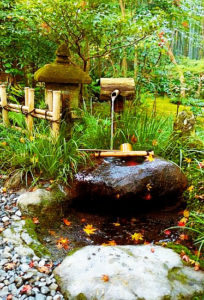 Wabi. There are many ways to balance this. A special tree, a lantern, or a particularly interesting stone, all of this with a patina and a reflective spirit of the garden, is a great example of a well-balanced
Wabi. There are many ways to balance this. A special tree, a lantern, or a particularly interesting stone, all of this with a patina and a reflective spirit of the garden, is a great example of a well-balanced 
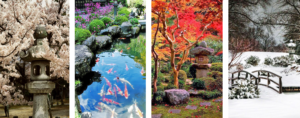 Japanese gardens are designed and maintained so that the owner or visitor can enjoy such gardens at all seasons. Each season brings a slightly different scene, a slightly different beauty.
Japanese gardens are designed and maintained so that the owner or visitor can enjoy such gardens at all seasons. Each season brings a slightly different scene, a slightly different beauty.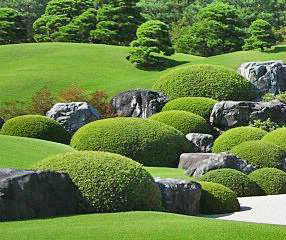 The idea of a
The idea of a 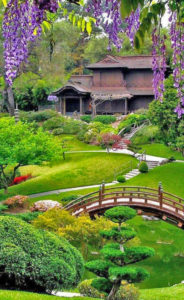 Nevertheless, we can say that they are all formed into a certain concept of an ideal landscape. And that is through a certain symbolism and poetics. Even a way of looking at the expression of this ideal landscape, it divides traditional Japanese gardens into different styles. These styles blend and mix in various gardens.
Nevertheless, we can say that they are all formed into a certain concept of an ideal landscape. And that is through a certain symbolism and poetics. Even a way of looking at the expression of this ideal landscape, it divides traditional Japanese gardens into different styles. These styles blend and mix in various gardens.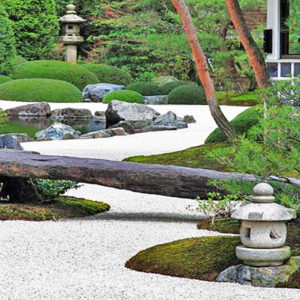
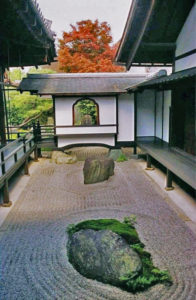
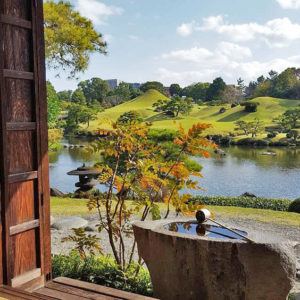 Tsukiyama
Tsukiyama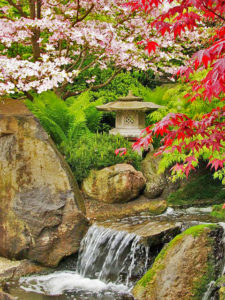 This is the classic style of the Japanese garden, which you can enjoy while strolling along garden paths and temple verandas. Usually, this garden is larger than the Zen Garden. This kind of garden is mainly sought after by visitors during the spring for the beauty of blooming sakura. In autumn, it is just the Tsukiyama gardens that make up those wonderful colour combinations of red maples and yellowish ginkgo trees.
This is the classic style of the Japanese garden, which you can enjoy while strolling along garden paths and temple verandas. Usually, this garden is larger than the Zen Garden. This kind of garden is mainly sought after by visitors during the spring for the beauty of blooming sakura. In autumn, it is just the Tsukiyama gardens that make up those wonderful colour combinations of red maples and yellowish ginkgo trees.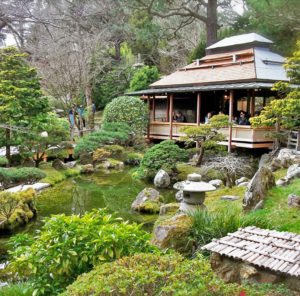 Roji, Chaniwa (Tea Garden)
Roji, Chaniwa (Tea Garden)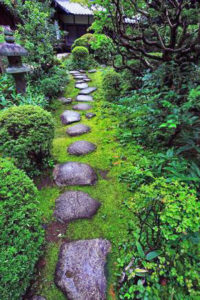
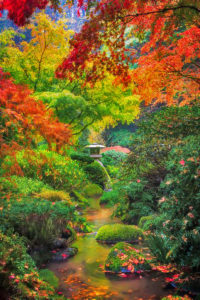 Paradise Garden
Paradise Garden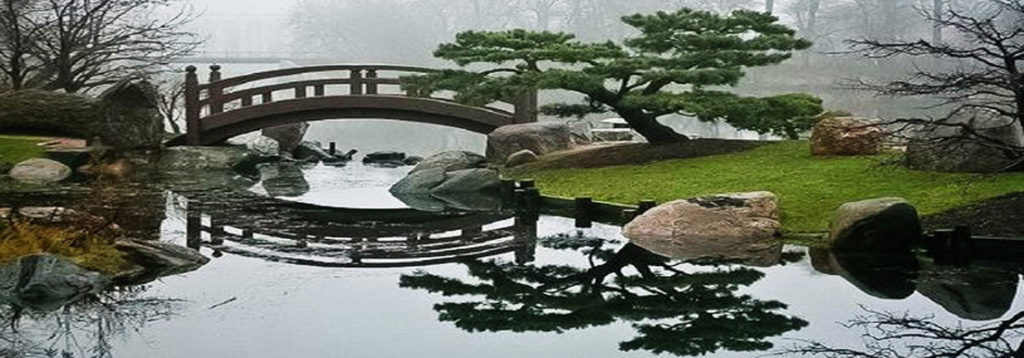 Water is one of the fundamental elements of
Water is one of the fundamental elements of 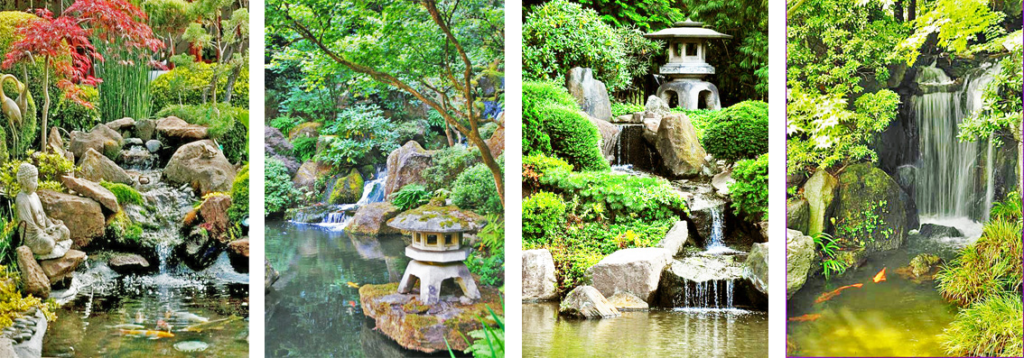
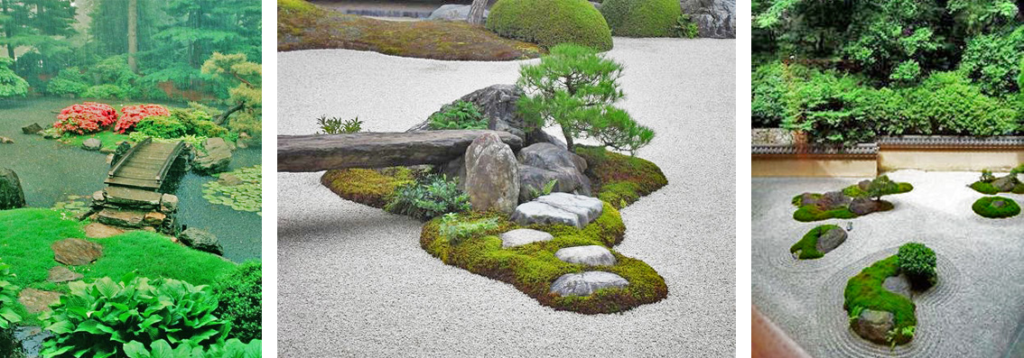
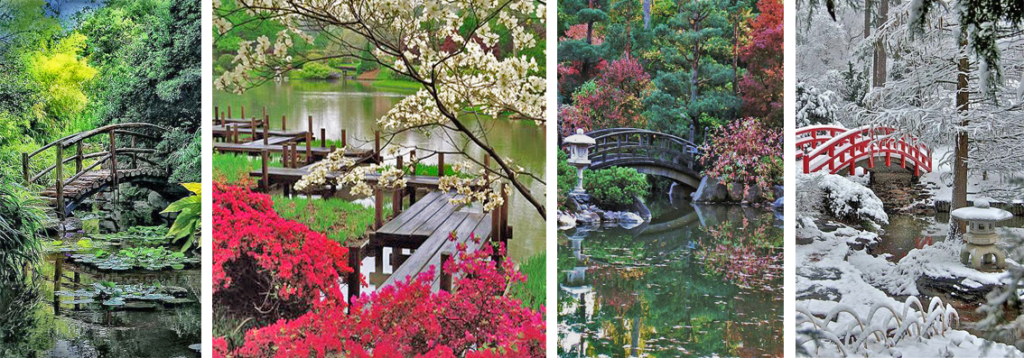
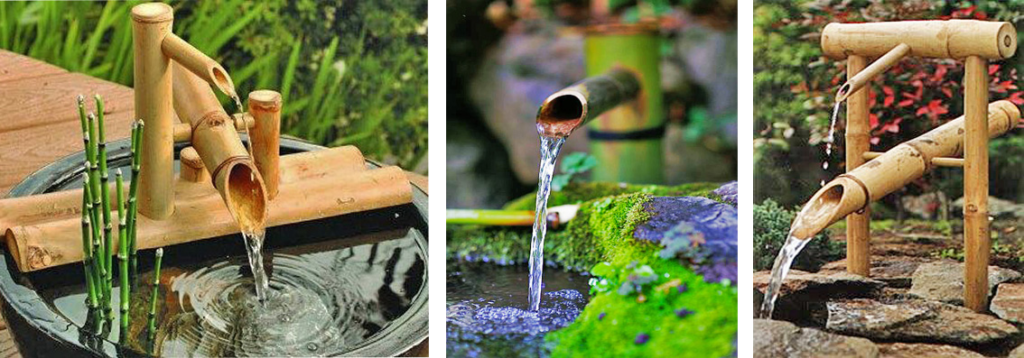
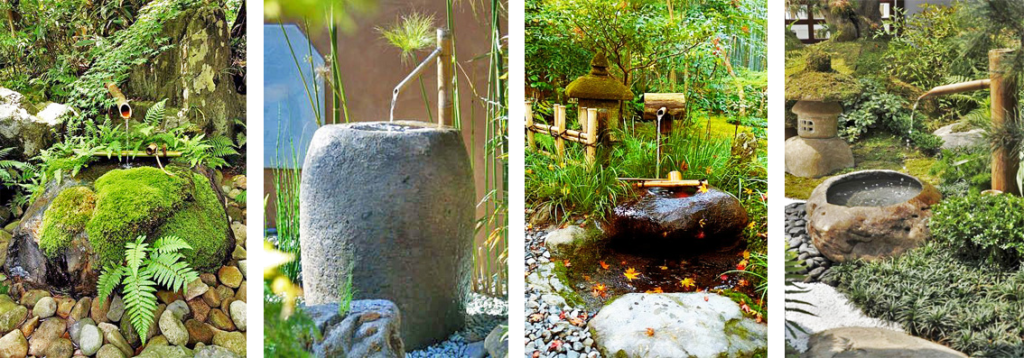
 Japanese koi carp and other fish bring into the water space wonderful colours and life.
Japanese koi carp and other fish bring into the water space wonderful colours and life.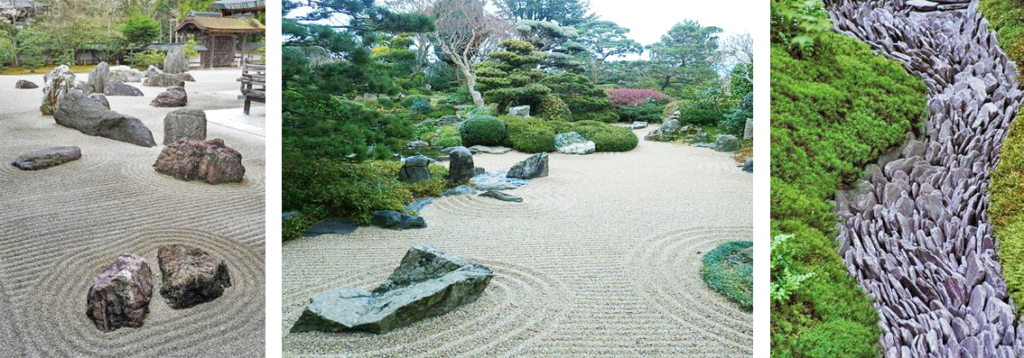
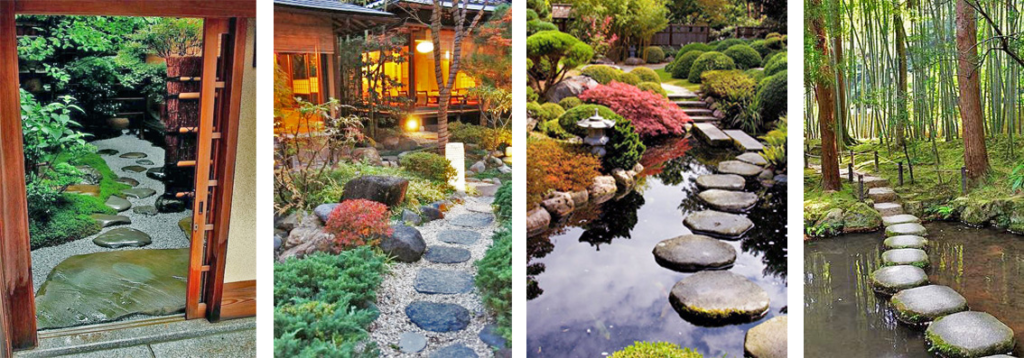
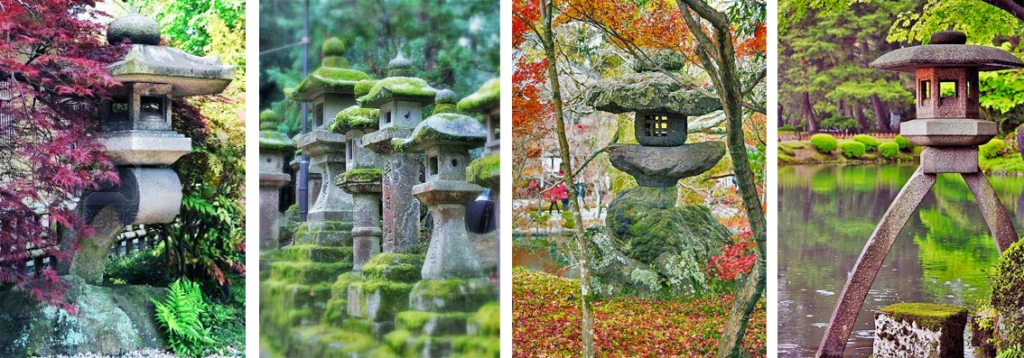
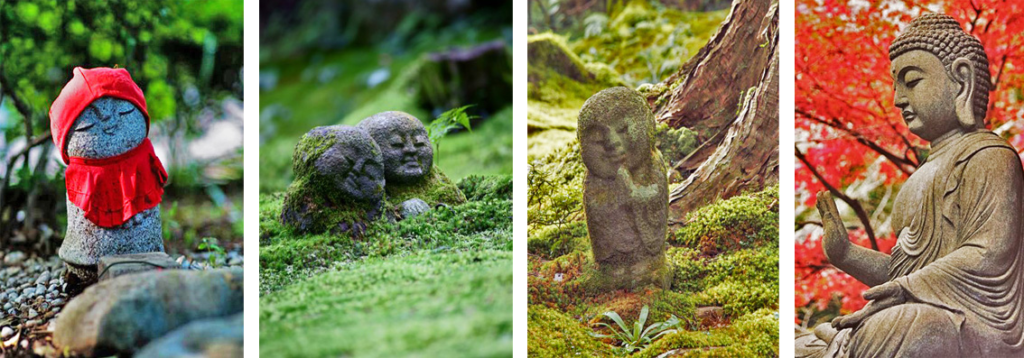
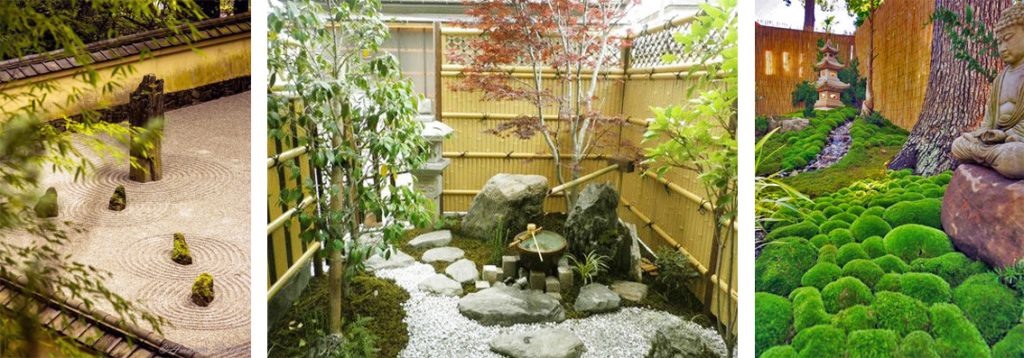
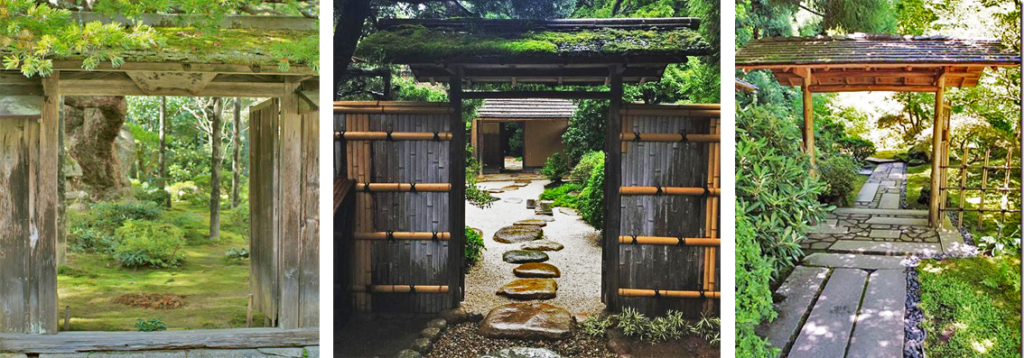
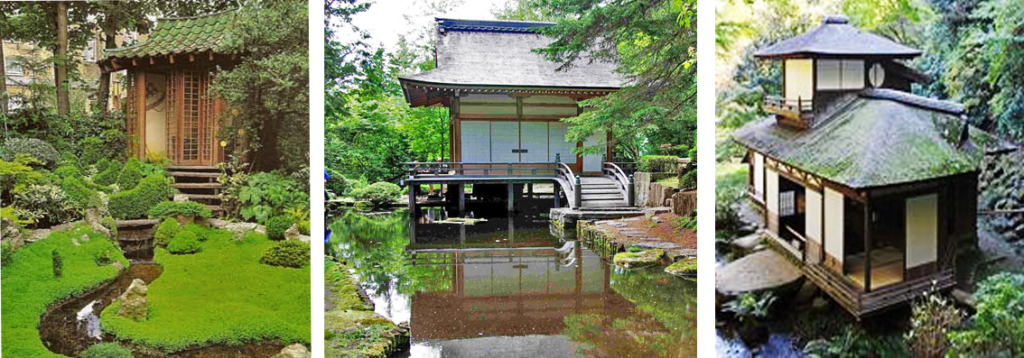
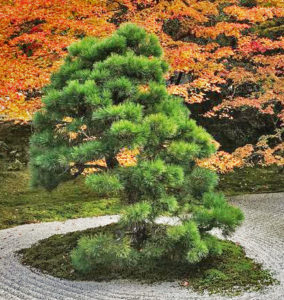 Trees and plants are not the most important element in Japanese gardens. Still, with most styles, the selection and composition of individual trees, shrubs, plants and mosses are very important. But that’s already a topic for another separate article.
Trees and plants are not the most important element in Japanese gardens. Still, with most styles, the selection and composition of individual trees, shrubs, plants and mosses are very important. But that’s already a topic for another separate article.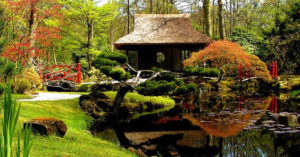 Japanese gardens have been inspiring more and more garden architects as well as gardeners themselves in the last century all over the world. Purity, simplicity, symbolism, harmony. All of us can evoke a pleasant feeling of peace. And above all, tranquillity and a slowdown in the flow of time is what in today’s increasingly hectic times we all,
Japanese gardens have been inspiring more and more garden architects as well as gardeners themselves in the last century all over the world. Purity, simplicity, symbolism, harmony. All of us can evoke a pleasant feeling of peace. And above all, tranquillity and a slowdown in the flow of time is what in today’s increasingly hectic times we all,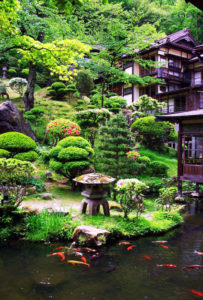 at least sometimes, want, look for, need.
at least sometimes, want, look for, need. Karesansui, or a dry / rock garden, better known as
Karesansui, or a dry / rock garden, better known as 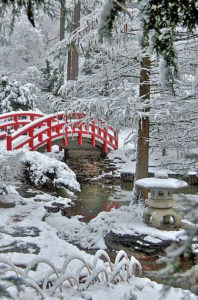
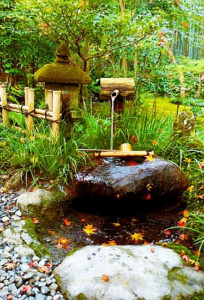

 If it is a very precious or favourite piece of yours and it has not cracked to too many shards, you might want to try to fix it so that it would not be visible repair. Then you can use such a mug, for example, for pencils, plate or bowl under the flower. But only if you can get it together in such way that it is not at first sight recognizable. Otherwise, you just throw it away.
If it is a very precious or favourite piece of yours and it has not cracked to too many shards, you might want to try to fix it so that it would not be visible repair. Then you can use such a mug, for example, for pencils, plate or bowl under the flower. But only if you can get it together in such way that it is not at first sight recognizable. Otherwise, you just throw it away.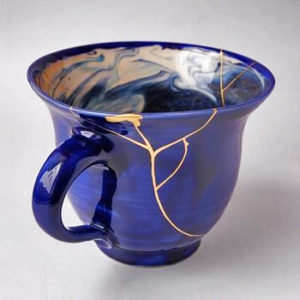
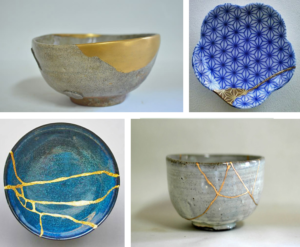
 The art of Kintsugi dates back to the end of the 15th century. According to one legend, this art came into being when Japanese shogun Ashikaga Yoshimasa sent a cracked Chinese chawan (a tea bowl) back to China for a repair. After its return, Yoshimasa was disappointed to find that this was corrected by unsightly metal staples. This motivated his craftsmen to find an alternative, aesthetically pleasing method of repair. And so Kintsugi was born.
The art of Kintsugi dates back to the end of the 15th century. According to one legend, this art came into being when Japanese shogun Ashikaga Yoshimasa sent a cracked Chinese chawan (a tea bowl) back to China for a repair. After its return, Yoshimasa was disappointed to find that this was corrected by unsightly metal staples. This motivated his craftsmen to find an alternative, aesthetically pleasing method of repair. And so Kintsugi was born.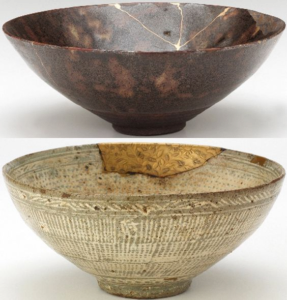 Collectors were so enchanted by this new art that some were accused of deliberately breaking valuable pottery to repair it with the golden Kintsugi seams. Kintsugi became closely associated with the ceramic vessels used for the Japanese tea ceremony – the chanoyu. However, over time, this technique has also been applied to ceramic pieces of non-Japanese origin, including China, Vietnam and Korea.
Collectors were so enchanted by this new art that some were accused of deliberately breaking valuable pottery to repair it with the golden Kintsugi seams. Kintsugi became closely associated with the ceramic vessels used for the Japanese tea ceremony – the chanoyu. However, over time, this technique has also been applied to ceramic pieces of non-Japanese origin, including China, Vietnam and Korea. Since its inception, Kintsugi technique has been connected and influenced by various philosophical thoughts. Specifically, with Japanese philosophy
Since its inception, Kintsugi technique has been connected and influenced by various philosophical thoughts. Specifically, with Japanese philosophy 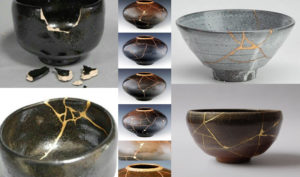 Crack repair method – use of gold dust and resin or lacquer to fix broken pieces with minimal overlapping or filling of missing pieces
Crack repair method – use of gold dust and resin or lacquer to fix broken pieces with minimal overlapping or filling of missing pieces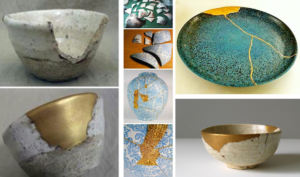 The piece recovery method – if a ceramic fragment is not available, it is produced and supplemented exclusively by epoxy resin – golden mixtures
The piece recovery method – if a ceramic fragment is not available, it is produced and supplemented exclusively by epoxy resin – golden mixtures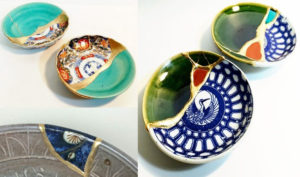 Joint call method – the missing piece of ceramics is replaced by a similarly shaped but inconsistent fragment of aesthetically different ceramics. It combines two visually different works into one unique piece. It is a method reminiscent of the well-known patchwork.
Joint call method – the missing piece of ceramics is replaced by a similarly shaped but inconsistent fragment of aesthetically different ceramics. It combines two visually different works into one unique piece. It is a method reminiscent of the well-known patchwork.


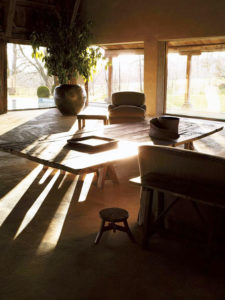 He gained the love for all the old and authentic and a certain fascination by the Middle Ages, the Renaissance and the Baroque, in his youth, when he helped his mother with the reconstructions of old houses in the Vlaeykensgang – the historic district of Antwerp, which was then rented to local artists. To this he later, thanks to business travels throughout Thailand, Cambodia and Japan, added an admiration for Eastern philosophies and art.
He gained the love for all the old and authentic and a certain fascination by the Middle Ages, the Renaissance and the Baroque, in his youth, when he helped his mother with the reconstructions of old houses in the Vlaeykensgang – the historic district of Antwerp, which was then rented to local artists. To this he later, thanks to business travels throughout Thailand, Cambodia and Japan, added an admiration for Eastern philosophies and art.
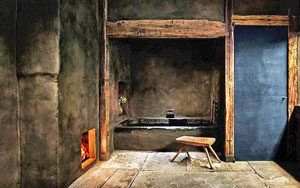 For some, his combination of materials and styles may seem contradictory, but Vervoordt believes that truth may be contained in a paradox and in ambiguity.
For some, his combination of materials and styles may seem contradictory, but Vervoordt believes that truth may be contained in a paradox and in ambiguity.
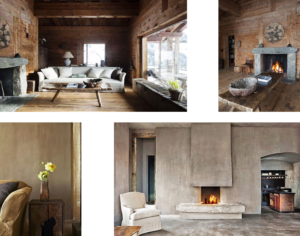
 The home should always be a place where you can forget about the difficulties of the surrounding world. A home based on wabi-sabi should be a place where you feel absolutely free and unrestrained, to relax, to meditate, but also to create and develop your creativity.
The home should always be a place where you can forget about the difficulties of the surrounding world. A home based on wabi-sabi should be a place where you feel absolutely free and unrestrained, to relax, to meditate, but also to create and develop your creativity. For an at least partial transformation of our home into the wabi-sabi style we do not need great finance or even a designer work. A few little steps might just be enough.
For an at least partial transformation of our home into the wabi-sabi style we do not need great finance or even a designer work. A few little steps might just be enough.
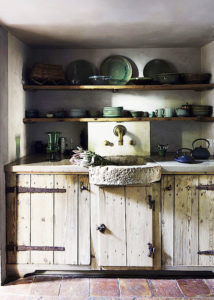
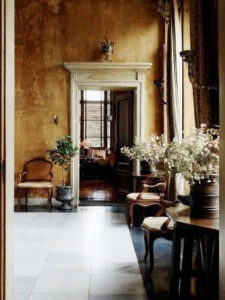 As already mentioned – space, light, purity and simplicity – these are the fundamental principles of wabi-sabi interior. You probably won’t enlarge your room by any magic wand, but sometimes it’s enough to just move a piece of furniture into the corner or to think about the necessity of having some of our stuff. Cleanliness (purity) is practised not only figuratively, but literally. With the cleanliness of our home, we express our respect for our visitors, but above all that we respect ourselves. By keeping surfaces free of dust and dirt we deliver to our space the desired feeling of peace and order.
As already mentioned – space, light, purity and simplicity – these are the fundamental principles of wabi-sabi interior. You probably won’t enlarge your room by any magic wand, but sometimes it’s enough to just move a piece of furniture into the corner or to think about the necessity of having some of our stuff. Cleanliness (purity) is practised not only figuratively, but literally. With the cleanliness of our home, we express our respect for our visitors, but above all that we respect ourselves. By keeping surfaces free of dust and dirt we deliver to our space the desired feeling of peace and order.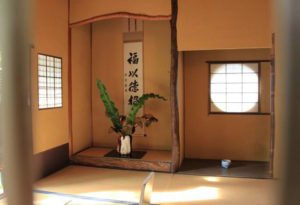 Try the old Japanese method of ROTATING PRECIOUS ITEMS. Japanese hid their valuables and were displayed just a few of them in a specially designated area or in a special niche – tokonoma. After a certain time, they realigned them. Assuming we have storage space, we just hide these little things and our valuable belongings and display only a few of them at a time. After some time, we replace them with another from our “warehouse”. This method is far less painful than just getting rid of our “valuables.” Moreover, after some time when we do not have them all the time in our eyes, they will seemingly come off as even rarer or on the contrary, suitable for throwing out or handing over.
Try the old Japanese method of ROTATING PRECIOUS ITEMS. Japanese hid their valuables and were displayed just a few of them in a specially designated area or in a special niche – tokonoma. After a certain time, they realigned them. Assuming we have storage space, we just hide these little things and our valuable belongings and display only a few of them at a time. After some time, we replace them with another from our “warehouse”. This method is far less painful than just getting rid of our “valuables.” Moreover, after some time when we do not have them all the time in our eyes, they will seemingly come off as even rarer or on the contrary, suitable for throwing out or handing over. The wabi-sabi style is not suitable for supporters of consumerism. On the contrary, it is inclining towards a sustainable environmental approach. Things and equipment made of quality natural materials and in good quality design are not hurt by time or a gentle usage. Getting a patina of time often rather benefits them. And we do not change such things so often.
The wabi-sabi style is not suitable for supporters of consumerism. On the contrary, it is inclining towards a sustainable environmental approach. Things and equipment made of quality natural materials and in good quality design are not hurt by time or a gentle usage. Getting a patina of time often rather benefits them. And we do not change such things so often.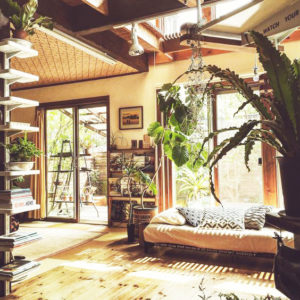 To make our home really a place where we feel absolutely free, freely, fetterless, we should listen to our feelings and take heed of our intuitions when arranging it. In that way, we use colours, materials, and objects that we love and that are pleasing to us.
To make our home really a place where we feel absolutely free, freely, fetterless, we should listen to our feelings and take heed of our intuitions when arranging it. In that way, we use colours, materials, and objects that we love and that are pleasing to us.
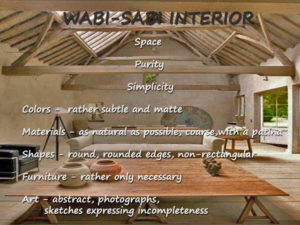
 The wabi-sabi style is not suitable for supporters of consumerism. On the contrary, it is inclining towards a sustainable environmental approach. Things and equipment made of quality natural materials and in good quality design are not hurt by time or a gentle usage. Getting a patina of time often rather benefits them. And we do not change such things so often.
The wabi-sabi style is not suitable for supporters of consumerism. On the contrary, it is inclining towards a sustainable environmental approach. Things and equipment made of quality natural materials and in good quality design are not hurt by time or a gentle usage. Getting a patina of time often rather benefits them. And we do not change such things so often.
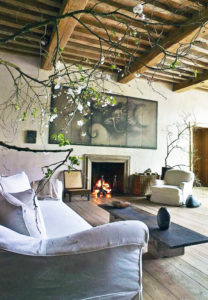 If you’ve recently found demonstrations of interiors in the style of wabi-sabi in magazines, they were often very expensive residences. And often they are also homes of more or less well-known people (
If you’ve recently found demonstrations of interiors in the style of wabi-sabi in magazines, they were often very expensive residences. And often they are also homes of more or less well-known people ( Manhattan, New York – a centre of global stock exchange and the location of the headquarters of commercial banks, in a way a place of luxury and pomposity, a place of a constant city rush. In a sense, a symbol of Western capitalism. You could describe this place with a lot of adjectives but definitely not calm and modest. And still, in Tribeca, a 2000 square meter large, two stories high rooftop apartment was reconstructed, a penthouse in the style of the wabi-sabi philosophy for a very famous man.
Manhattan, New York – a centre of global stock exchange and the location of the headquarters of commercial banks, in a way a place of luxury and pomposity, a place of a constant city rush. In a sense, a symbol of Western capitalism. You could describe this place with a lot of adjectives but definitely not calm and modest. And still, in Tribeca, a 2000 square meter large, two stories high rooftop apartment was reconstructed, a penthouse in the style of the wabi-sabi philosophy for a very famous man.
 All that using a minimalistic design, seemingly incompatible architectural elements, interesting recycled materials from the vicinity, antique furniture from Asia and Europe. This sustainable design is noticeable on the entire interior and exterior.
All that using a minimalistic design, seemingly incompatible architectural elements, interesting recycled materials from the vicinity, antique furniture from Asia and Europe. This sustainable design is noticeable on the entire interior and exterior.
